Versión en Español aqui.
Our Tequila experience started with a briefing on Casa Cuervo’s history and a tour of the “La Rojeña” distillery facilities.
La Casa José Cuervo
Founded in 1758, “Casa José Cuervo” is one of the tequila industry’s oldest and most recognized brands. It is one of the leading tequila producers in the world and exports its products to numerous countries.
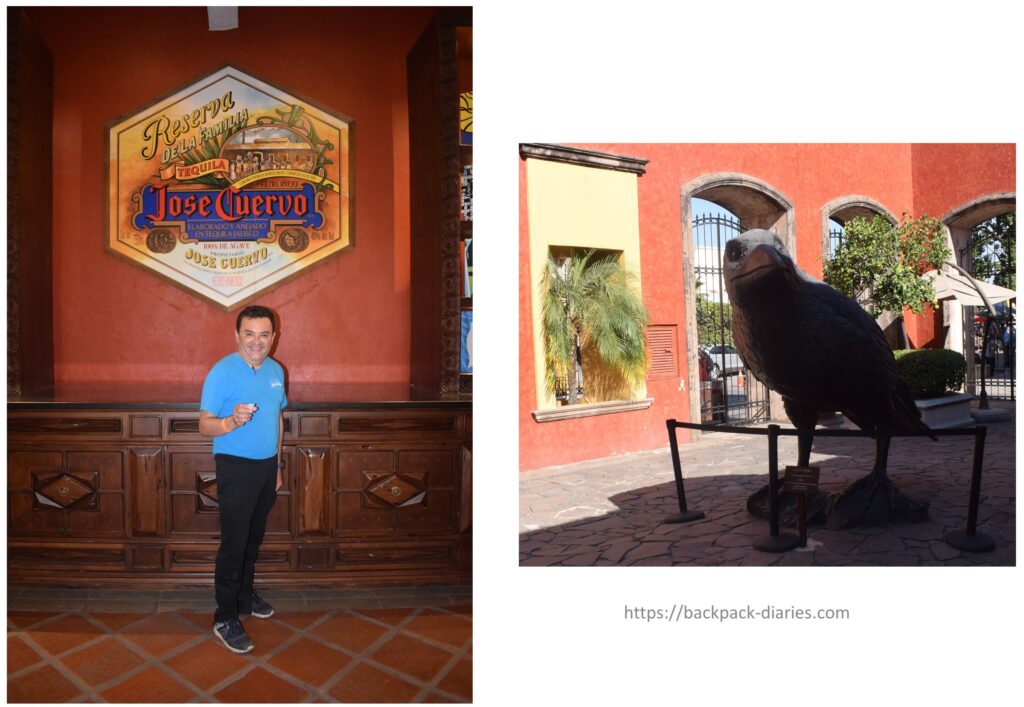
The company owns three tequila distilleries with a combined daily production capacity of 200,000 liters. Of these three distilleries, “La Rojeña” was not only the first of the company but also the oldest distillery in Latin America and the one we visited today. I invite you to read my previous post about my visit to the magical town: “3 days in the Town of Tequila“
Tour start
“La Rojeña” offers daily tours of the facilities, including one that provides an “educational tasting”, a Tequila Experience.Karen was our guide during the tour. We started with a brief exhibition of vintage vehicles in the 1920s-1940s, the property of “Casa Cuervo.”

As we walked through the gardens and exhibition rooms, we encountered statues and tasteful decorations in shades of yellow, enhancing the overall ambiance. Ad hoc, a crow was in its cage on our way to the “oven patio”.
Oven or Reception Patio
This is where they receive the raw material: the blue agave. Although there are more than 200 varieties of agave, only blue agave is used for Tequila.
Each agave takes between 6 to 10 years to mature, but before it must go through a “jima”(heema) process. The “jima” is the harvest itself, which removes the plant’s heart, freeing it from all the leaves surrounding it. It shapes the agave into pineapple-like, although it has nothing to do with the fruit. At the counter I’ve run across Tequila “El Jimador”, which I now see the origin of the name 🤓.
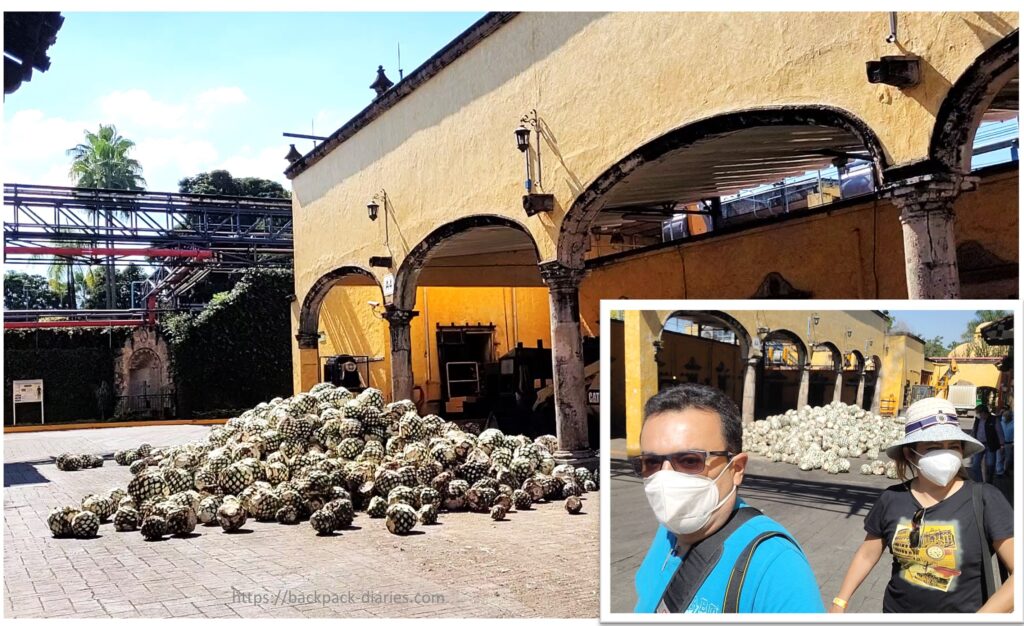
Each “pineapple” weighs 40 to 60 kg, and one litre of tequila is produced for every 7 kg of agave.
This patio has a daily reception capacity of 180 tons of agave.

The black doors are masonry ovens that steam cook the agaves for 38 hours at 90 degrees Celsius.
Unload zone
Once the cooking time is up, the ovens are opened through an interior door to the process area. These doors are left open for an extra 8 hours to cool off. Once the temperature is ambient, the bakers remove the agaves and place them on a conveyor belt that will take them to four extraction mills to obtain the maximum juice.
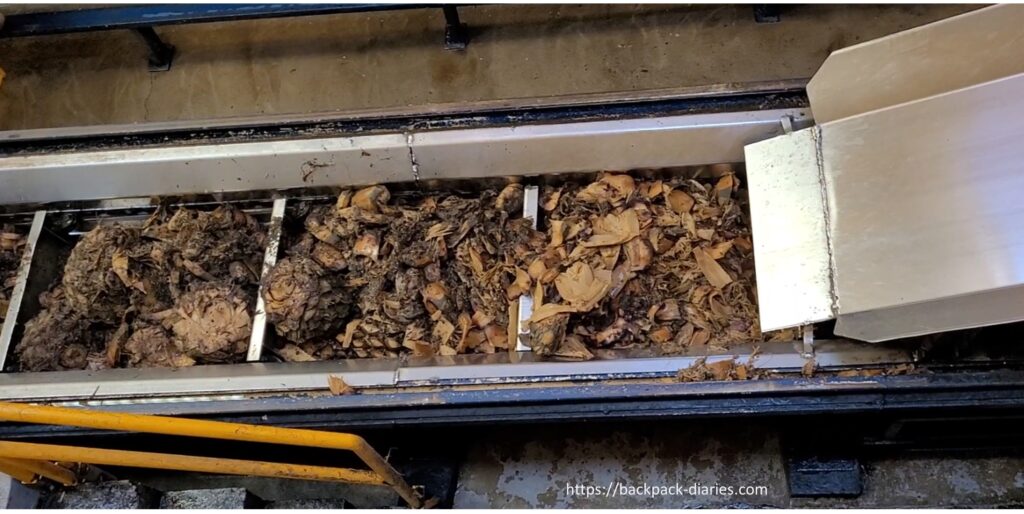
All this extracted juice is known as “mosto” or “mead” (aguamiel in Spanish) and will be sent to the fermentation tanks; there are 10 stainless steel fermentation tanks here in La Rojeña.
Fermentation Area
In this area, they introduce natural yeast to ferment the juice sugar into alcohol, allowing it to mature for 50 hours, resulting in a liquid with 14 degrees of alcohol. It’s important to note that, at this stage, the liquid contains alcohol but is not classified yet as tequila; it will be tequila, but only during the distillation process.

The Cellar
We stepped into a spacious, well-illuminated cellar that maintained a controlled temperature and humidity level. Karen informed us that she had set the humidity at 60% and was carefully regulating the room temperature to prevent the wood from becoming too dry.
The types of wood in the barrels play an important role in developing the aroma during the maturation process:
- Deep Charring: It exudes aromas of chocolate, almonds, and a hint of smokiness, making it a preferred choice for aged (añejos), particularly for extra-aged (extra-añejos) tequilas.
- Moderate Charring: It exudes aromas of vanilla, honey, and toasted (a bit like breakfast!🍳 ), making it a preferred choice for rested (reposados) and aged tequilas (añejos).
- Light Charring: It exudes aromas of spices and sweet oak, making it a preferred choice for reposado tequilas.
Depending on the type of tequila stored, the barrels could be reusable up to five times. Barrel’s lifetime is between 15 and 20 years, and then after, they are usually for decoration or crafts.
Although each barrel has a capacity of 200 liters, a space of about 5 liters is left for oxygenation. Once the tequila enters the barrel, it remains in the same position throughout the maturation process. During this time, each year, 5% of the product is lost through natural evaporation.
On display, we noticed the level of tequila in a barrel after seven years of aging, less than a quarter 😮! A reason why the añejo and extra-añejo are more expensive, less quantity, and more time in the barrel.
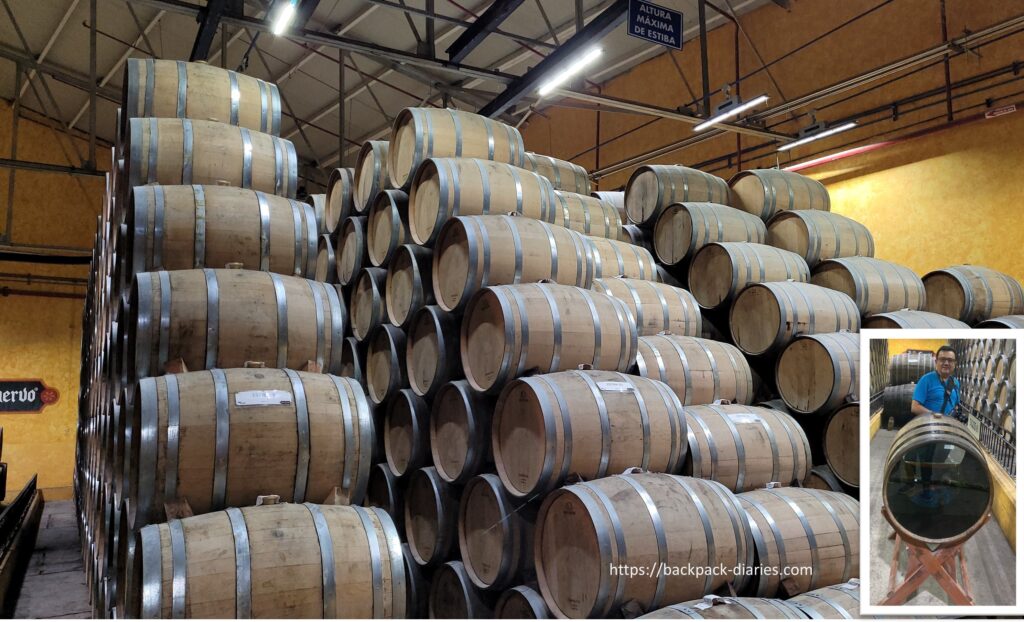
Although La Rojeña is the oldest of the three distilleries that the Cuervo group owns, it is the smallest one as it only processes 50,000 liters of tequila daily; however, it is the one that preserves the most artisanal process.
Five types of Tequila
Next to a counter, Karen explained us about the five types of tequila on display:
Tequila Blanco (White)
It is the one bottled right after distillation, perhaps with an alcohol reduction stage if needed.
However, in the Cuervo world, if the product label is “Platinum” or “Silver” it means that it rested a month inside a “Pipon” (a huge barrel with a capacity of 17,700 liters). This rest period does not change the color but rather gives a touch of aroma and flavor.
Tequila Reposado (Rested)
This tequila has matured for two months and a year, either in barrels or a “pipon.”
Tequila Añejo (Aged)
This type is the one that has matured in barrels between one and three years.
Tequila Extra Añejo (Extra-Aged)
It is the one that matures in barrels for more than three years. The “Family Reserve” has matured for seven years.
Tequila Joven (Young)
It is the one obtained by mixing or “marrying” tequilas. For example, a White Tequila as a base with a Reposado or with an Añejo.
Casa Cuervo produces several brands: “Reserva de la Familia”, “Jose Cuervo Tradicional”, “El Centenario”, “1800”, “Maestro Dobel”. Something I didn’t expect to hear is about the only tequila that is not 100% Agave 😮: the “Jose Cuervo Especial”.
Destilation Area
Unfortunately, it was prohibited to take photos or videos in this area. However, the process closely resembles what we observed during our tour of the Rubio distillery. Here at José Cuervo, there are indeed more storage tanks and processing units. They provided us with insights into the yeast injection procedure and the two subsequent stages in the production process.
Mural “Mundo Cuervo”
Continuing our tour, we ran across the “Cuervo World Mural” along the hallway.
A large mural that captures the history of tequila, its production and cultural importance in the lives of Mexicans. Among the many representations are that of the Goddess Mayahuel as the point of origin and the founder Don Jose Cuervo mounted on a horse and with a crow on his arm.

Educational Tasting, a “Tequila Experience”
Those who acquired the “educational tasting” continued towards the “Diamond room.” At our table, we found five glasses arranged: four containing tequila and one filled with water. Additionally, there was a tray holding cookies, a slice of lemon, and some strips of cooked agave and cinnamon.
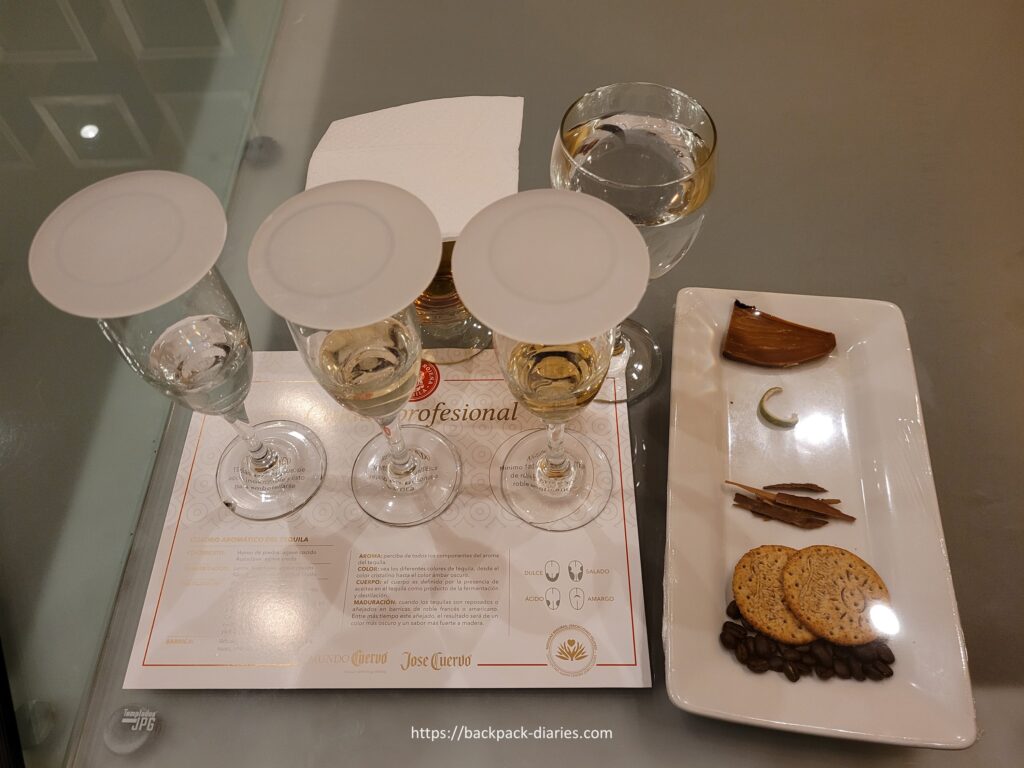
The Tequila Experience: Tequila myths
Just like debunking some conspiracy theories, this time is the turn of Tequila myths!
Myth: Drink it in one shot.
Fact: By far the No. 1 myth. I’m sorry for your lyrics, Arjona, but no, no, no. The same goes for you all, Pedrito, Jorge, Jose Alfredo, and all the charro movies.
Reality is: “inhale, hold the air, take a sip, hold it on the tongue for about three seconds, pass it, and exhale.”
Myth: Drink it accompanied with lemon and salt.
Reality: No, that was in the old days when only 55 alcohol-degree tequilas existed. Nowadays, drink it as plain as it is.
Cocktails are in a league of their own. For those, there are mixed tequilas that are perfect for concoctions like Paloma Blanca, Charro Negro, Cucarachas (my mind flew back to university years), Margaritas, and more. While white tequila is also used in cocktails, never use an añejo; it would almost be sacrilegious to use extra-añejo!
Myth: Drinking tequila only in the tequila-shot glasses.
I have a ton of those as souvenirs, but other than being collectibles, I’d hate to think I’ve spent my bucks in vain. After all, Mexican charro films can’t be entirely off the mark either.
Reality: Professional tasters and connoisseurs use flute glasses, not tequila-shot glasses. Otherwise, they won’t be able to observe the “dripping”. However, let’s not feel bad about this fact and drink it in any way that makes us happy!
When is Tequila authentic?
The first thing is how to identify authentic Tequila?
We dipped our fingers in the glass of tequila and gently applied it to the back of our hands. After a brief moment, the scent should transition from alcohol to that of cooked agave. The alcohol evaporates swiftly, and the skin absorbs it effectively, leaving behind only the aroma of agave. The skin should not feel greasy or sticky; otherwise, is rubbish tequila 😒.
Tasters also use visual techniques called “dripping or tearing.” This involves observing the tears that form on the inner walls of the glass after the liquid has been slightly shaken or tilted. The legs refer to the irregular columns that descend. These techniques give an idea of the viscosity and texture of the tequila.
This consistent, uniform dripping is not only aesthetically appealing, but can also indicate higher quality and a greater concentration of flavors and aromas.
Once we have convinced ourselves that we are about to drink authentic Tequila, we proceed with the tasting experience.
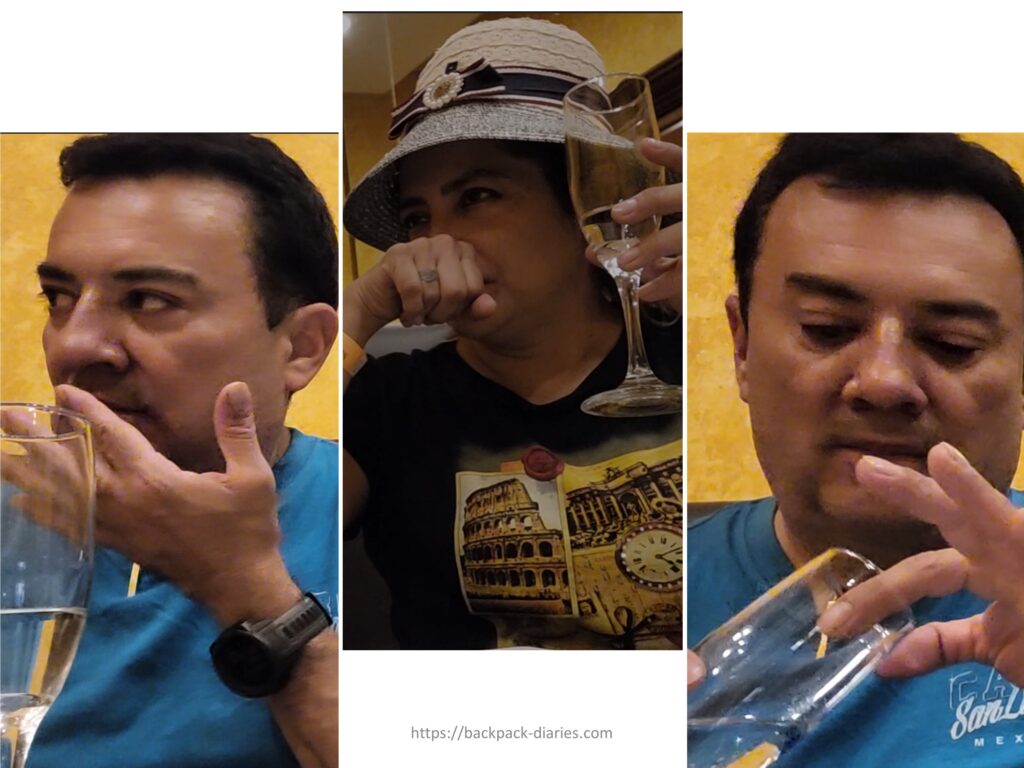
Tequila Blanco
The first to taste on the Tequila Experience is a white Tequila, the “Tradicional Plata”.
The first one we started with was white tequila, “Tradicional Plata”. As we brought the glass closer to our noses, the scent of alcohol became more pronounced. Conversely, when we brought the glass towards our nose without tilting our heads, the alcoholic aroma diminished.
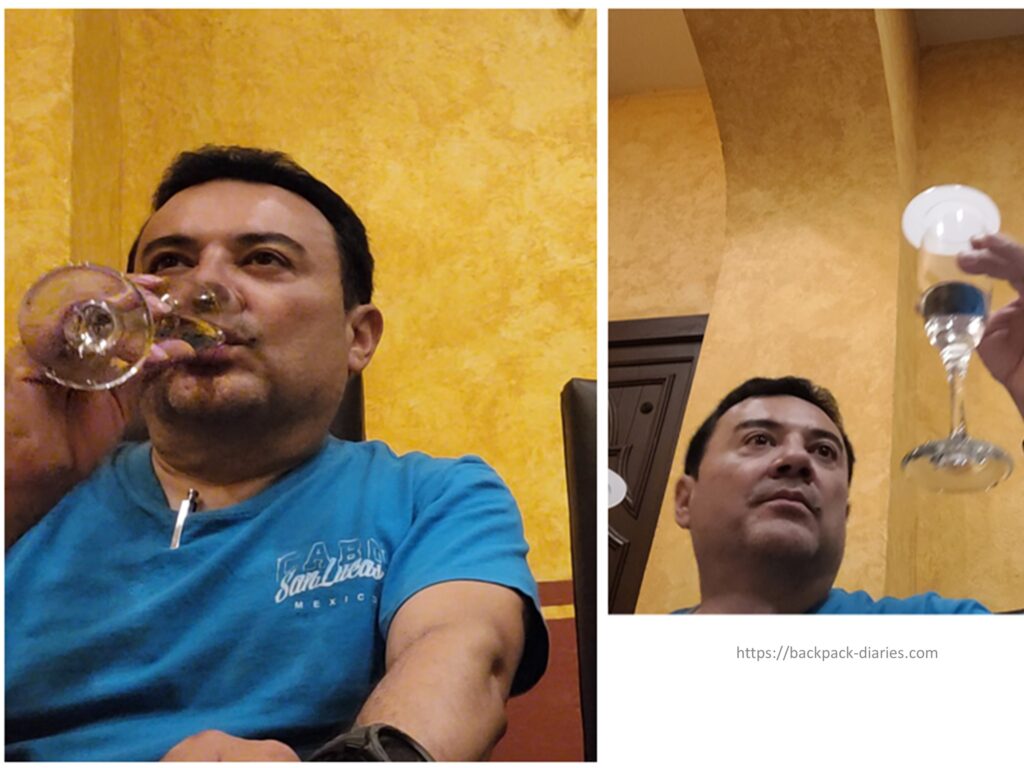
However, it’s important to note that white tequila typically lacks wood, sweet, or vanilla aromas since they result from aging in wooden barrels, which is not the case here. With the exception of Cuervo’s “Silver” tequila, which undergo a brief one-month aging period in a “Pipon” (a large barrel), white tequila generally resides in stainless steel tanks for about 15 days before bottling.
We placed the lemon slice onto the rim of the tequila flute glass, and then, bringing our noses to the glass, we savored a harmonious blend of clean citrus and tequila aromas; both scents emanated simultaneously.
Then, let’s inhale, hold the air, take a sip, hold it on the tongue for about three seconds, pass it, and exhale. It felt like nectar in the cavities of the mouth, leaving a complex but pleasant flavor.
Seafood makes a good choice for pairing with white tequila.
Ready to reset the palate, we smelled coffee beans, chewed the cracker, sipped water, and continued with the second tequila.
Tequila Reposado
The next one on our “Tequila Experience” was a ‘reposado’, with a golden and brighter tone. It felt less intensive in alcohol but with a woodier aroma.
Also, a denser texture, a light crown, a more remarked dripping than the previous one (oh wow! I’m already speaking as an expert) For the aroma test, we placed the cinnamon strip on the rim of the glass, resulting in a slight nose tickling.
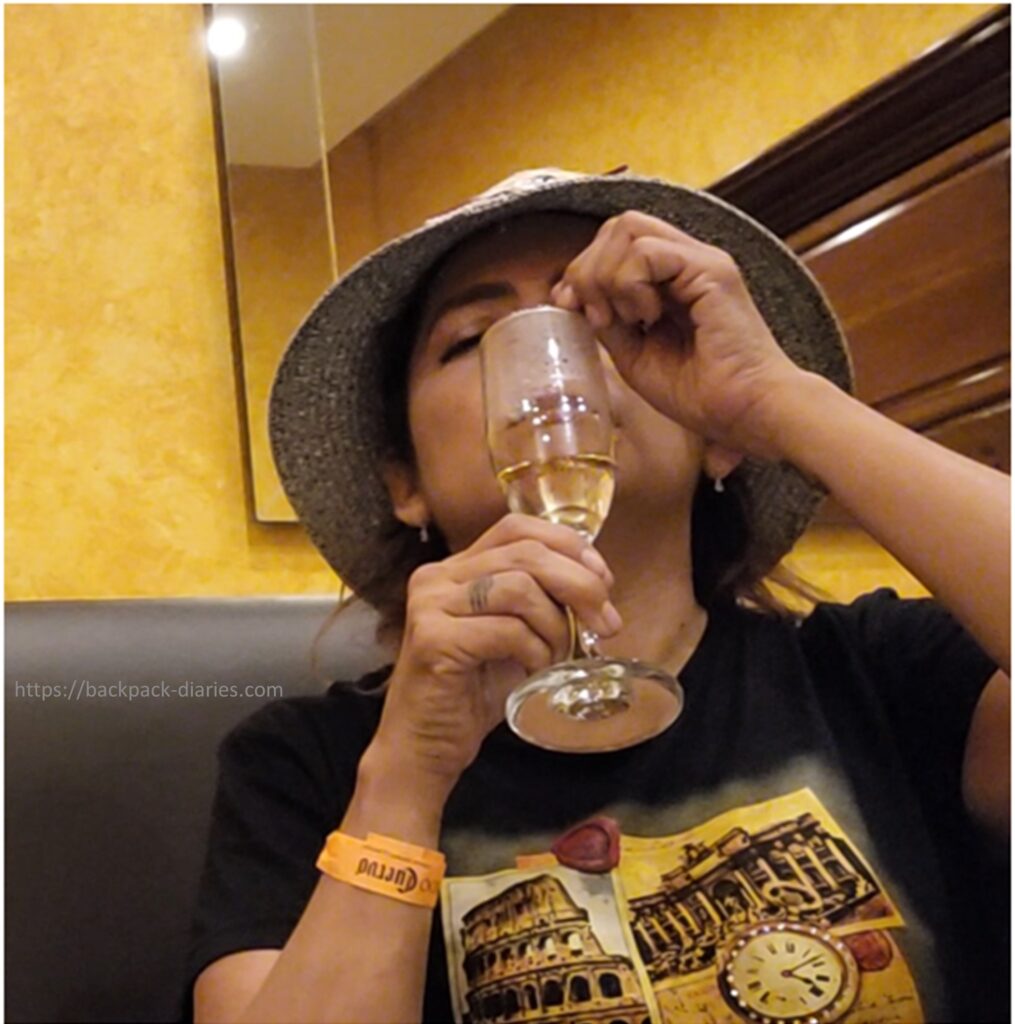
Then, let’s inhale, hold the air, take a sip, hold it on the tongue for about three seconds, pass it, and exhale. Despite not being into white tequilas, I felt this one was more artificial or perfumed.
An appropriate pairing for this tequila is with beef, lamb, and pork. Some of the participants even suggested chicharron. Why not?
Ready to reset the palate, we smelled coffee beans, chewed the cracker, sipped water, and continued with the third tequila.
Tequila Añejo
Our “Tequila Experience” continued with an “Añejo”. This tequila has matured in French or American oak barrels for at least one year. It displays a much more marked, denser body with a woodier aroma, citric notes, and smokiness.
Then, let’s inhale, hold the air, take a sip, hold it on the tongue for about three seconds, pass it, and exhale.
I think it is too friendly; it didn’t sting the tongue, although there is a remaining sensation imprinted on the back of the tongue.
We now chew the stripe of cooked agave and drink it again; the flavor turns sweeter, and that woody taste has disappeared.
Next time, to better savor an añejo, I’ll see if I can have a piece of cooked agave on hand.
For this tequila, Karen tells us the appropriate pairing is with desserts.
Ready to reset the palate, we smelled coffee beans, chewed the cracker, sipped water, and continued with the fourth and last tequila.
Tequila Extra Añejo
As the saying goes “the best always comes last”. The last one in the “Tequila Experience” is the “Family Reserve” a seven-year extra-añejo Tequila is the best product of Casa Cuervo.
first thing that caught my attention is the change from a flute into a cognac glass. This extra-aged tequila was initially regarded as the cognac of tequilas in its early days, and this tradition has endured ever since.
At first shake is noticeable how heavier and denser is this tequila compared with any of the previous ones; it also has a much darker tone. It has a very intense aroma, so it is best to smell it only from outside the rim.
Karen proposed the Cuervo world style toast:
Not for love, not for money, not for health……but for the good life!
Then, let’s inhale, hold the air, take a sip, hold it on the tongue for about three seconds, pass it, and exhale.
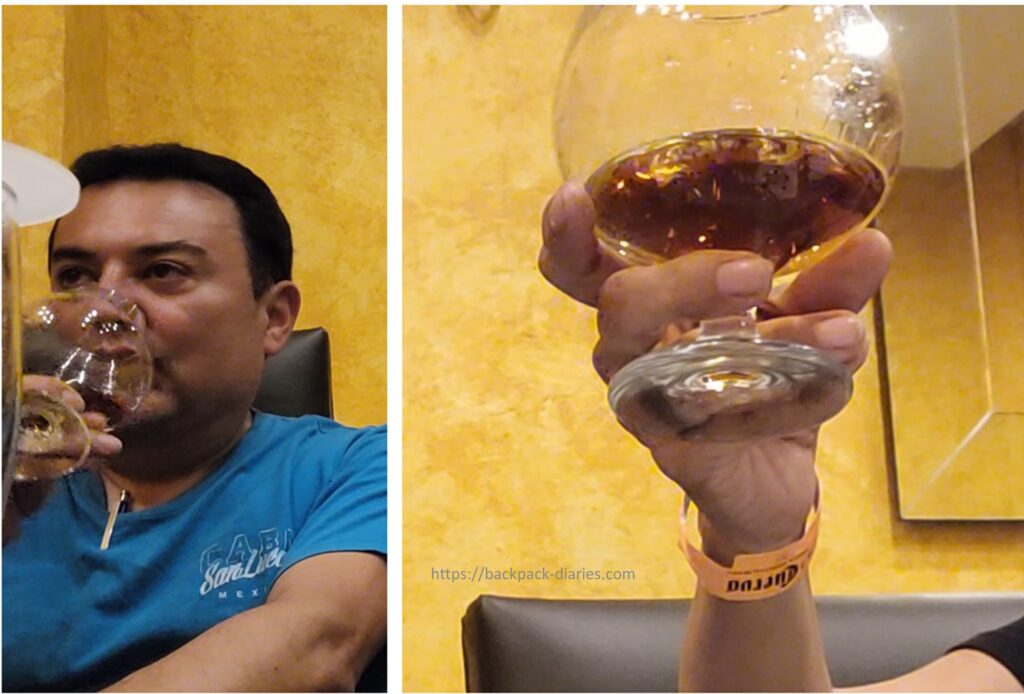
Wow! This tequila boasts an exceptionally smooth and intricate flavor profile, offering a delightful nectar-like sensation in the mouth. Undoubtedly, it stands out as the finest among all the tequilas we sampled today, and it’s no surprise its highest price.
At the end of the “Tequila Experience” tour
The only tequila from the five types that we didn’t have the chance to taste was the “Young Tequila.” As discussed earlier, a Young Tequila is the result of combining several tequilas to create something unique.
As our tour and tasting experience at José Cuervo’s Rojeña came to an end, we took a group photo for the occasion and made a quick stop at the souvenir shop before departing.
So, let’s not forget:
“Inhale, hold the air, take a sip, hold it on your tongue for about 3 seconds, pass it, and exhale.”
I also invite you to check out my previous post about the “3 days in Tequila Town”
Your feedback, comments, likes, and shares are always welcome. If you find this post interesting, please share it with others, or you can follow my Facebook page or Instagram.
Thanks and have a good day!
EO






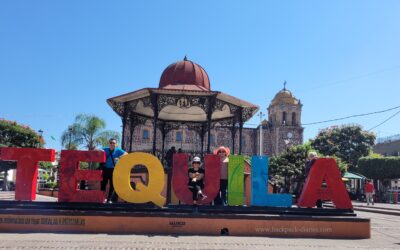
0 Comments